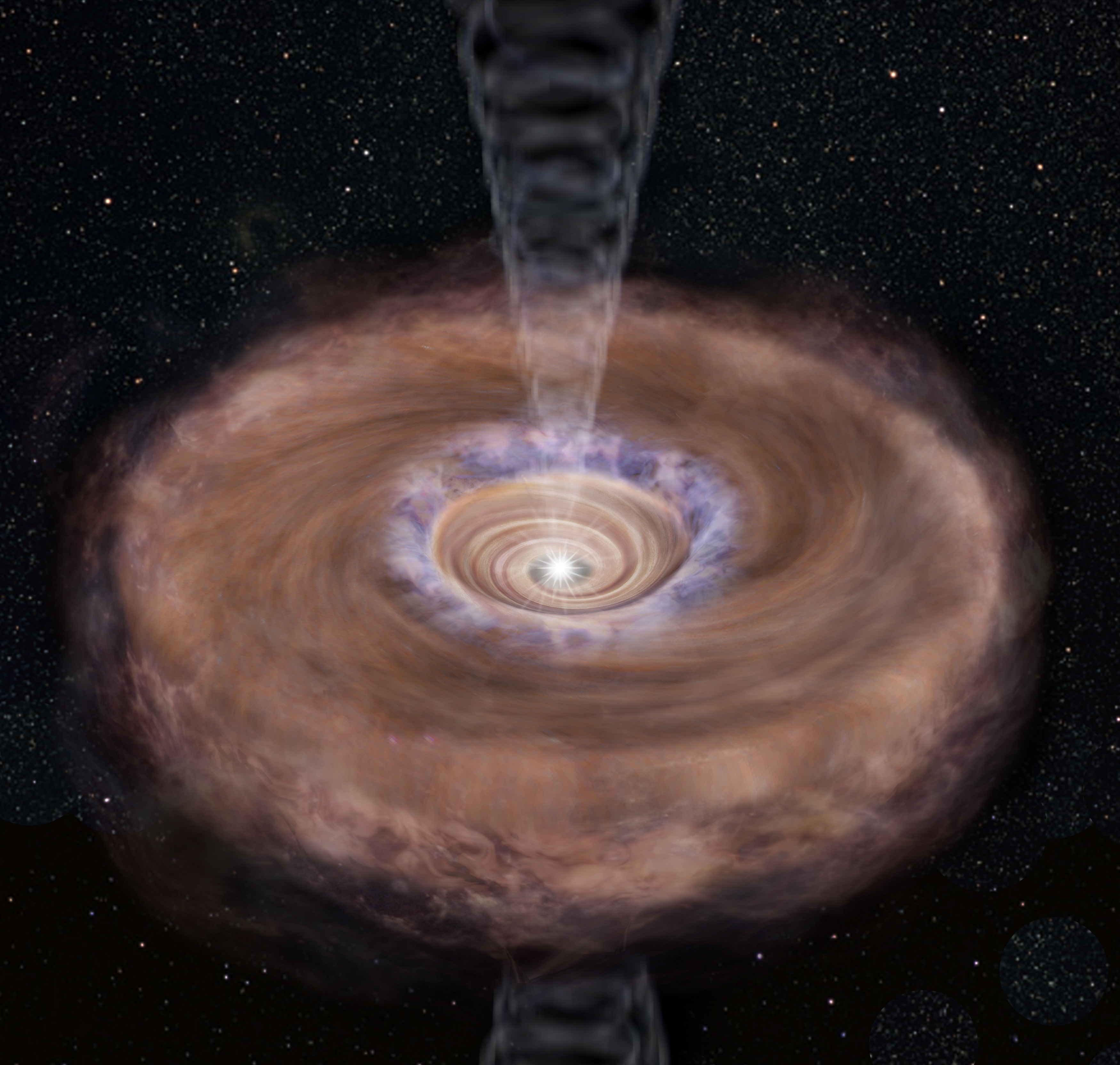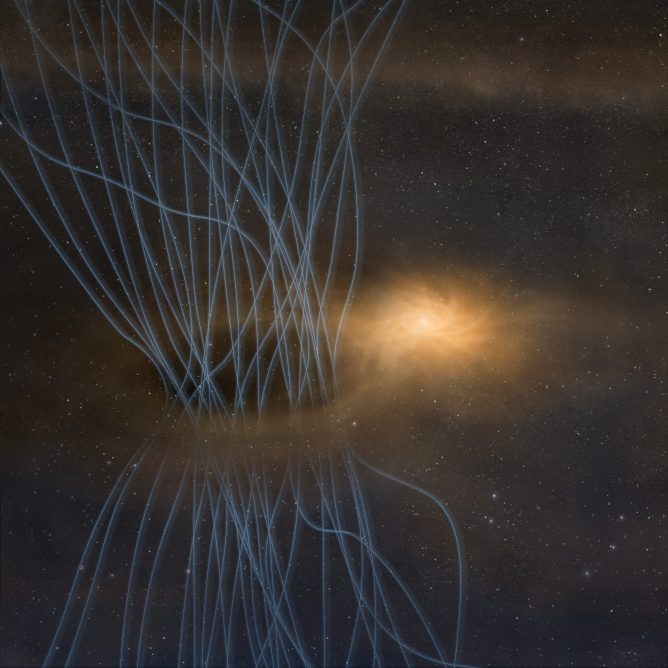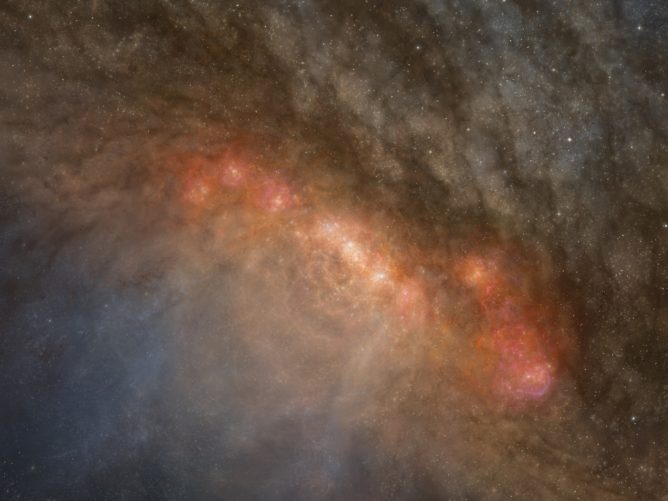A star is formed by gravitational contraction of interstellar gas (mostly H2) and dust. Even after the birth of a protostar (a baby star), the gas and dust in the envelope are still infalling onto the protostar. At the same time, the gas disk grows up around the protostar, and eventually evolves into a planetary system. However, the formation process of the gas disk as well as the associated chemical changes have been left unexplored observationally. Dr. Nami Sakai, assistant professor of physics in the University of Tokyo, and her global team observed the young protostar L1527 in the Taurus molecular cloud at a high spatial resolution with ALMA, and discovered an unexpected chemical change in the transition zone between the infalling envelope and the gas disk. So far, it has been believed that interstellar matter is smoothly delivered to the gas disk around the protostar without any significant chemical changes. However, that model is now found to be oversimplified. The infalling gas is inhibited due to centrifugal force and accumulates at the outer edge of the gas disk, where local heating causes a drastic chemical change. This chemical change highlights the outer edge of the gas disk which is still growing. The Solar system may also have experienced this situation. It is necessary to assess how pre-solar materials found in meteorites were affected by such a chemical change during the solar-nebula formation. In this sense, this study raises an important problem for understanding if the case of the Solar system is miraculous or ubiquitous in the Universe.
- For details, see the press release (PDF) from the School of Science, The University of Tokyo.
- Commentary on the press release “A Drastic Chemical Change Occurring in Birth of Planetary System: Has the Solar System also Experienced it?”
The research findings are presented in the article Sakai et al. “Change in the chemical composition of infalling gas forming a disk around a protostar” published in Nature on February 12th, 2014.
The authors acknowledge financial support from Grants-in-Aid from the Ministry of Education, Culture, Sports, Science and Technologies of Japan (21224002, 24684011, 25400223, and 25108005), by JSPS, from MAEE under the Japan?France integrated action programme (SAKURA), from the French Agence Nationale pour la Recherche (ANR) project FORCOMS (contract ANR-08-BLAN-0225), and from the Partenariats Hubert Curien (PHC) Programme SAKURA 25765VC.
Figure. Illustration of rotating-infalling gas toward a protostar. The abundance of sulfermonooxcyde is enhanced at the outer edge (colored blue) of a protoplenatry disk.
Credit: The University of Tokyo










